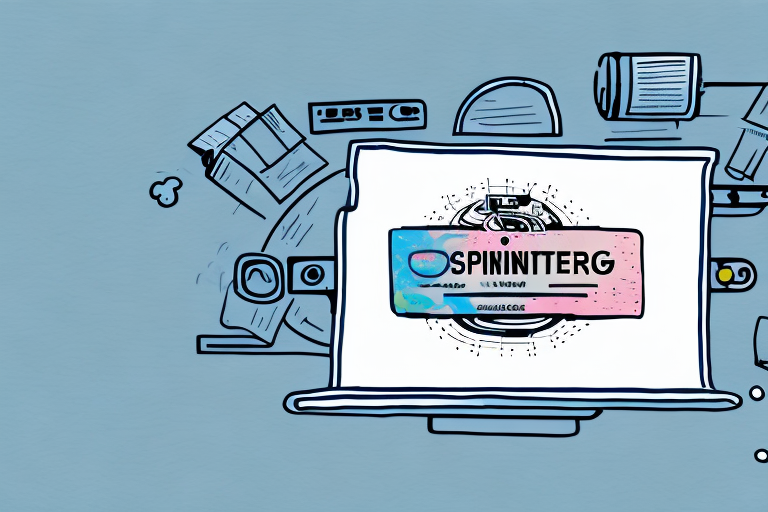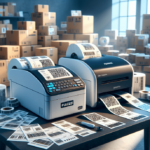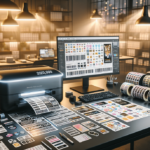The Importance of a Dedicated Shipping Label Printer
For businesses involved in shipping products, a dedicated shipping label printer is essential. Unlike regular printers, these specialized devices are optimized to produce high-quality, durable labels that are easily readable by logistics companies. This ensures that packages are accurately tracked and delivered to the correct destinations, minimizing errors and delays.
Moreover, dedicated shipping label printers are designed to handle bulk printing efficiently. This capability not only saves time but also reduces the likelihood of mistakes that can occur when using general-purpose printers for extensive label printing tasks. Features such as wireless connectivity and seamless integration with popular shipping software further enhance the efficiency of the shipping process, allowing businesses to manage their logistics more effectively.
Shipping Label Printers vs. Regular Printers
Label Size and Quality
Shipping labels are typically larger and require higher resolution compared to regular labels. Dedicated shipping label printers are built to accommodate these sizes and maintain high print quality, ensuring that barcode scanners and logistics personnel can easily read them.
Durability and Reliability
Shipping label printers are engineered for continuous operation, making them more reliable for businesses that require consistent and rapid label production. In contrast, regular printers may struggle with high-volume printing and often need frequent maintenance, leading to potential downtime.
Connectivity Options
While regular printers usually offer basic connectivity options like USB, shipping label printers often come with advanced features such as Wi-Fi or Ethernet connectivity. This allows multiple users to access the printer from different devices and locations, facilitating a more streamlined workflow.
Key Factors in Choosing a Shipping Label Printer
Print Quality and Speed
High print quality ensures that labels are clear and professional, while fast printing speeds can significantly enhance productivity, especially for businesses with large shipping volumes. Look for printers that offer a balance between speed and resolution to meet your specific needs.
Connectivity and Software Integration
Ensure that the printer you choose can easily integrate with your existing shipping software and offers flexible connectivity options. This integration can automate many aspects of the shipping process, reducing manual effort and the risk of errors.
Cost and Maintenance
Consider both the initial cost of the printer and the ongoing expenses related to maintenance, such as ink or thermal ribbon replacements. Investing in a reliable printer with affordable maintenance costs can lead to long-term savings.
Compatibility with Label Types
Different shipping carriers may require various label sizes and types. A versatile printer that can handle multiple label formats will provide greater flexibility and ensure compliance with carrier-specific requirements.
Top Shipping Label Printers for Small Businesses
Choosing the right shipping label printer can greatly impact your business operations. Here are some of the top-rated options for small businesses:
- DYMO LabelWriter 4XL: Known for its reliability and ease of use, it handles large labels efficiently.
- Zebra GX430t: Offers high-speed printing with excellent print quality, suitable for high-volume needs.
- Rollo Label Printer: Versatile and cost-effective, it supports various label sizes and types.
- Brother QL-820NWB: Features wireless connectivity and a user-friendly interface.
- Seiko Smart Label Printer 650: Compact design with robust performance for smaller workspaces.
Each of these printers offers a unique set of features tailored to different business needs, ensuring that you can find the perfect match for your shipping requirements.
Printing Technologies: Thermal vs. Inkjet
Thermal Printing
Thermal printing is the most common technology used for shipping labels. It utilizes heat to transfer ink onto labels, offering speed, reliability, and a lower cost per label. There are two types of thermal printing:
- Direct Thermal: Uses heat-sensitive paper that darkens when heated. It's cost-effective and simple but less durable over time.
- Thermal Transfer: Uses a ribbon to transfer ink, resulting in more durable labels that are resistant to fading and smudging.
Inkjet Printing
Inkjet printers spray ink onto labels, allowing for high-quality color prints. While they offer the advantage of vibrant, eye-catching labels, they are generally slower and have higher operational costs compared to thermal printers. Additionally, inkjet labels may be prone to smudging and fading over time.
Setting Up and Troubleshooting Your Shipping Label Printer
Setup and Installation
Setting up a shipping label printer typically involves connecting it to a computer or network, installing necessary drivers or software, and configuring printer settings. Most printers come with detailed instructions and online resources to guide you through the setup process.
Common Issues and Solutions
- Poor Print Quality: Check for clogged print heads and ensure that the correct label type is selected in the software.
- Connectivity Problems: Verify network connections and ensure that the printer is properly connected to the Wi-Fi or Ethernet network.
- Paper Jams: Clear any obstructions and ensure that labels are loaded correctly into the printer.
If persistent issues arise, consulting the printer's manual or contacting customer support can provide further assistance.
The Future of Shipping Label Printing: Emerging Trends and Innovations
The shipping label printing industry is continually evolving with advancements in technology. Some of the emerging trends include:
- Cloud-Based Printing: Allows businesses to print labels from any location with internet access, enhancing flexibility and scalability.
- Mobile Printing: Facilitates on-the-go printing, which is particularly useful for businesses with remote or mobile operations.
- Smart Labels: Incorporating technologies like RFID and QR codes to provide more information and improve tracking capabilities.
Staying updated with these trends can help businesses adopt more efficient and innovative shipping practices, ensuring they remain competitive in a rapidly changing market.
Conclusion
Investing in a dedicated shipping label printer is a strategic decision that can significantly enhance your business's shipping operations. By choosing a printer that offers high quality, reliability, and seamless integration with your existing systems, you can streamline your shipping process, reduce errors, and improve overall efficiency. Additionally, staying informed about the latest trends and maintaining your printer properly will ensure long-term success and customer satisfaction. Whether you opt for a thermal or inkjet printer, the right choice will support your business needs and contribute to a smooth and effective shipping workflow.






















